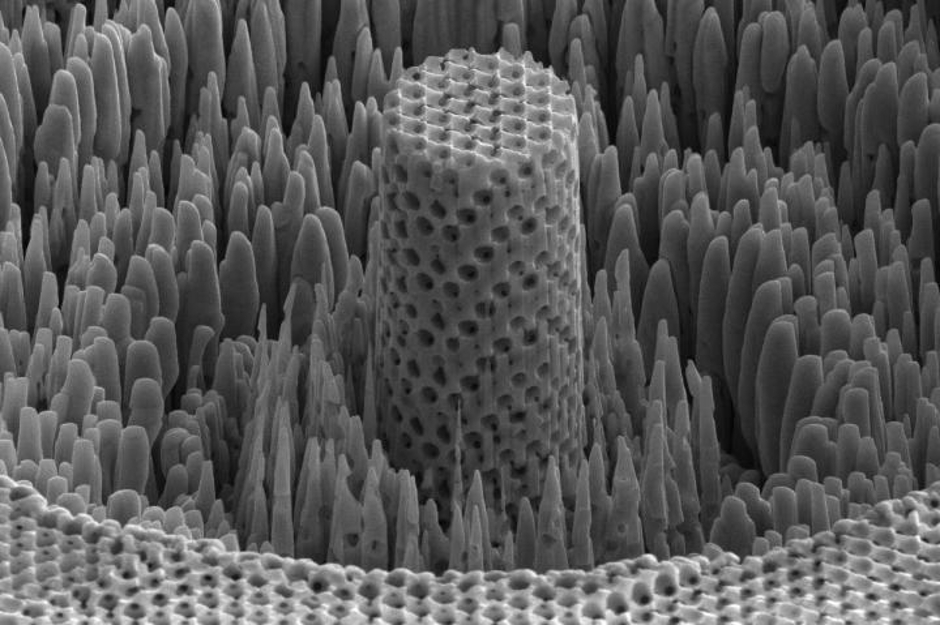
The empty space of the pores, and the self-assembly process in which they're made, make the porous metal analogous to a natural material, such as wood.
The advance from researchers at the University of Pennsylvania's School of Engineering and Applied Science, the University of Illinois at Urbana-Champaign, and Cambridge University is detailed in Nature Scientific Reports.
The porosity of wood grain serves the biological function of transporting energy. Similarly, the empty space in the researchers' so-called ‘metallic wood’ could be infused with other materials. In one application, scaffolding infused with anode and cathode materials could enable the metallic wood to serve as a prosthetic leg that's also a battery.
The study was led by James Pikul, Assistant Professor in the Department of Mechanical Engineering and Applied Mechanics at Penn Engineering. Bill King and Paul Braun at the University of Illinois at Urbana-Champaign, along with Cambridge University’s Vikram Deshpande who contributed to the study.
Natural metals have defects in their atomic arrangement that limit their strength, a situation applicable to titanium, which would be ten times stronger if it had perfect atomic alignment. Consequently, materials researchers have been trying to exploit this phenomenon by designing structures with the geometric control necessary to realise the mechanical properties that arise at the nanoscale, where defects have reduced impact.
"The reason we call it metallic wood is not just its density, which is about that of wood, but its cellular nature," Pikul said. "Cellular materials are porous; if you look at wood grain, that's what you're seeing - parts that are thick and dense and made to hold the structure, and parts that are porous and made to support biological functions, like transport to and from cells."
"Our structure is similar," he said. "We have areas that are thick and dense with strong metal struts, and areas that are porous with air gaps. We're just operating at the length scales where the strength of struts approaches the theoretical maximum."
The struts in the researchers' metallic wood are around 10nm wide, or about 100 nickel atoms across. Other approaches involve using 3D-printing-like techniques to make nanoscale scaffoldings with hundred-nanometre precision, but the process is hard to scale to useful sizes.
"We've known that going smaller gets you stronger for some time, but people haven't been able to make these structures with strong materials that are big enough that you'd be able to do something useful,” Pikul said. “Most examples made from strong materials have been about the size of a small flea, but with our approach, we can make metallic wood samples that are 400 times larger."
Pikul's method starts with tiny plastic spheres suspended in water. When the water is slowly evaporated, the spheres settle and stack to provide an orderly, crystalline framework. Using electroplating, the researchers then infiltrate the plastic spheres with nickel. Once the nickel is in place, the plastic spheres are dissolved with a solvent, leaving an open network of metallic struts.
Because roughly 70 per cent of the resulting material is empty space, this nickel-based metallic wood's density is extremely low in relation to its strength.
Replicating this production process at commercially relevant sizes is the team's next challenge.




Poll: Should the UK’s railways be renationalised?
I _do_ remember British Rail - and that it was <i>literally</i> a national joke https://youtu.be/zV2lmSDKvO8